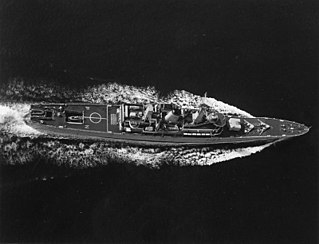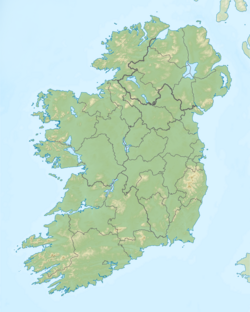Aer Lingus is the flag carrier of Ireland. Founded by the Irish Government, it was privatised between 2006 and 2015 and it is now a wholly owned subsidiary of International Airlines Group (IAG). The airline's head office is on the grounds of Dublin Airport in Cloghran, County Dublin.
This is a list of aviation-related events from 1958.
This is a list of aviation-related events from 1960.

HMS Penelope was a Leander-class frigate of the Royal Navy. In the Falklands War, Penelope fired on an Argentine patrol boat and claimed to be the last ship attacked by Argentine aircraft over the course of the war. In 1991, she was commissioned into the Ecuadorean Navy, and renamed Presidente Eloy Alfaro.

United Air Lines Flight 297 was a scheduled flight from Newark International Airport to Atlanta that crashed 10 miles (16 km) southwest of Baltimore on November 23, 1962, killing all 17 people on board. An investigation concluded that the aircraft, a Vickers Viscount 745D turboprop airliner, had struck at least two whistling swans, which caused severe damage to the plane, resulting in a loss of control.

United Airlines Flight 823 was a scheduled flight from Philadelphia International Airport, Pennsylvania, to Huntsville International Airport, Alabama, with 39 on board. On July 9, 1964, around 18:15 EST, the aircraft, a Vickers Viscount 745D, registration N7405, crashed 2.25 mi (3.62 km) northeast of Parrottsville, Tennessee, after experiencing an uncontrollable fire on board, killing all 39 onboard. The fire of unknown origin occurred in the passenger cabin. One passenger abandoned the aircraft through the No.4 escape window prior to impact, but did not survive the free-fall. Among the victims was Durant da Ponte, professor of American literature and assistant dean of the University of Tennessee graduate school.

HMS Reclaim was a deep diving and submarine rescue vessel of the British Royal Navy. She was originally intended to be the King Salvor-class ocean salvage vesselSalverdant and was fitted with specialised equipment including underwater television cameras and sonar and echosounding apparatus. She was also equipped for submarine rescue work.

Tuskar Rock is a group of rocks topped by a lighthouse 11 kilometres off the southeast coast of County Wexford, Ireland. The rocks have probably destroyed more ships than any other Irish coastal feature. One hundred and seventy-six wrecks are listed for the Tuskar Rock area at Irish Wrecks Online.

Air France Flight 1611 (AF1611) was a Sud Aviation SE-210 Caravelle III en route from Ajaccio, in the island of Corsica, to Nice, France, on 11 September 1968 when it crashed into the Mediterranean Sea off Nice, killing all 95 on board. According to the official report, the crash was non-survivable. The Ajaccio-Nice Caravelle crash is the deadliest aviation incident in the Mediterranean Sea to date. However for unknown reasons, all documents & photos related to the accident have been kept classified.

The 1957 Nutts Corner BEA Viscount crash was a British European Airways (BEA) flight from London to Belfast that crashed at Nutts Corner Airport on 23 October 1957, killing all seven passengers and crew.
Stobart Air was an Irish regional airline based in Dublin, originating in 1970 and closing in 2021. It operated scheduled services under the brands Aer Lingus Regional, BA CityFlyer and KLM Cityhopper on behalf of their respective owners. Stobart Air had operating bases in Cork, Dublin and Belfast for Aer Lingus Regional.

On 10 November 1971, a Merpati Nusantara Airlines Vickers Viscount, registration PK-MVS, crashed in the Indian Ocean off the coast of Padang, West Sumatra, Indonesia, after telling air traffic controllers they could not make their destination due to bad weather. All 69 people aboard the aircraft were killed in the crash. It remains the third worst Vickers Viscount accident.

On 31 December 1968 a Vickers Viscount aircraft departed from Perth, Western Australia for a flight of 724 nautical miles (1 341 km) to Port Hedland. The aircraft crashed 28 nautical miles (52 km) short of its destination with the loss of all twenty-six people on board. More than half of the right wing, from outboard of the inner engine to the wingtip, including the outer engine and its propeller, broke away from the rest of the aircraft in flight and struck the ground a significant distance from the main wreckage. Investigation by the Australian Department of Civil Aviation and British Aircraft Corporation concluded that a mysterious action during maintenance led to extensive fatigue cracking in the right wing spar. This accident remains the third worst in Australia's civil aviation history.

Ansett-ANA Flight 149 crashed near Winton in Queensland, Australia on 22 September 1966, killing all on board. The Vickers Viscount aircraft departed from Mount Isa, Queensland, Australia for a 73-minute flight to Longreach. Forty-four minutes after takeoff a fire started in one of the engines. The crew were unable to extinguish the fire or feather the propeller so made an emergency descent with the intention of landing at Winton, a small town along the route. The fire spread to the fuel tank and weakened the wing structure so that a large part of the left wing broke away and the aircraft crashed. All twenty-four occupants were killed. The accident remains the fifth-worst in Australia's civil aviation history.

On the evening of 30 November 1961, Ansett-ANA Flight 325, a service from Sydney to Canberra, Australia, operated by a Vickers Viscount 720, broke up in mid-air and crashed shortly after takeoff, when it encountered a severe thunderstorm. All 15 people on board were killed.

Metrojet Flight 9268 was an international chartered passenger flight operated by Russian airline Kogalymavia. On 31 October 2015, at 06:13 local time EST, the Airbus A321-231 operating the flight exploded above the northern Sinai Peninsula following its departure from Sharm El Sheikh International Airport, Egypt en route to Pulkovo Airport, Saint Petersburg, Russia. All 224 passengers and crew on board died. The cause of the crash was most likely an onboard explosive device as concluded by Russian investigators.

Transbrasil Flight 801 (TR801/TBA801) was a scheduled cargo flight from Eduardo Gomes International Airport to São Paulo/Guarulhos International Airport that crashed on 21 March 1989. The Boeing 707 crashed into a heavily populated slum in Guarulhos 2 kilometres from the runway. The crash resulted in the death of all 3 crew members and 22 people on the ground. 200 people were injured.

On 12 July 1969, a Douglas DC-3 operated by Royal Nepal Airlines crashed in Nepal en route from Tribhuvan International Airport to Simara Airport on a domestic scheduled passenger flight. The wreckage of the aircraft, registration 9N-AAP, was found in Hetauda, Makwanpur District. All 31 passengers and four crew aboard were killed in the crash. An investigation into the crash was launched by Nepalese authorities after the accident site was located.















